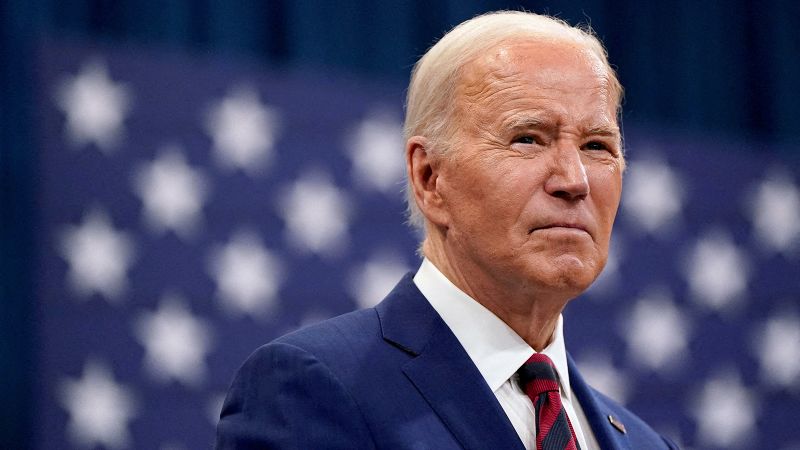Holiday inflation hitting consumers hard this season
Inflation held nearly steady in November, as drops in gas prices and long-lasting goods mostly offset still hot increases for service.
Fox – 32 Chicago
The Federal Reserve is expected to hold interest rates steady Wednesday, signaling that a nearly two-year streak of hikes may be ending as inflation cools.
If there is no change, the central bank’s key short-term rate would remain at 5.25% to 5.5% for the third month in a row.
- The Fed’s decision will be announced at 2:00 PM ET, Wednesday, Dec. 13.
- Fed Chair Jerome Powell is expected to speak at 2:30 PM ET following the central bank’s final meeting of the year.
- Powell’s remarks will likely give insight into whether the Fed will start cutting interest rates in 2024, reducing borrowing costs for consumers as well as businesses.
The Fed is meeting Dec. 12 and 13 and will announce its interest rate decision at 2:00 PM ET Wednesday.
Yes. The Federal Reserve System is the U.S.’s central bank.
The first Federal Reserve meeting of the new year will be from Jan. 30 through 31.
- Jan. 30-31
- March 19-20
- April 30- May 1
- June 11-12
- July 30-31
- Sept. 17-18
- Nov. 6-7
- Dec. 17-18
The U.S. economy was strong in the third quarter as consumers continued to spend despite high interest rates and inflation.
The value of all services and products generated in the U.S., or GDP, rose at a seasonally adjusted 4.9% for the year in the months spanning July to September, according to the Commerce Department. That was more than twice the 2.1% increase in the previous quarter and the most aggressive pace of growth since the end of 2021 when the economy surged back from a recession sparked by the pandemic.
Economists surveyed in September said there was a 48% chance the U.S. will slip into a recession over the next year, down from the 61% odds forecast in May.
Barclays predicted a loss of roughly 375,000 jobs by the middle of next year. But consumer spending remains robust despite high inflation and interest rates that are making credit card use and consumer loans more expensive. And that may help stave off a recession, says Barclays economist Jonathan Millar.
In November, the Consumer Price Index (CPI) ‒ a measure of the average shift in prices for different products and services ‒ was 3.1%, down slightly from the month before.
Annual inflation is down dramatically from the 9.1% in June 2022 that marked a 40-year high but remains above the 2% target the Fed sees as the level that signals the rate of price increases is under control.
The Federal Reserve watches two key aspects of the economy, price stability and maximum employment, and those are the main factors it takes into account for its interest rate decisions. The CPI is a primary measure the Fed looks at to help determine if prices are “stable.’’
Core prices don’t count the volatile costs of food and energy items, giving a more accurate window into longer-term trends.
If you’re deemed a top performer at a company that is offering raises, you’ve got a pretty good chance of getting a pay boost next year.
About 3 out of four business leaders told ResumeBuilder.com they intended to give raises. But half of those company executives said only 50% or less of their staff members would see a pay hike, and 82% of the raises would hinge on performance. For those who do manage to get the salary boost, 79% of employers said the pay hikes would be greater than those given in recent years.
Not recently.
The 10-year Treasury yield was above 5% in November when the Fed kept rates steady for the second consecutive month the first time it had left the key rate unchanged two months in a row in almost two years.
That led to mortgage rates spiking to almost 8% and pushed up other borrowing costs for consumers and businesses. Stocks meanwhile sank close to a recent low, leading Fed Chair Jerome Powell to say such financial pressures could achieve the same cooling effect on the economy as additional rate hikes.
But in the following weeks, 10-year Treasury yields dipped to 4.2% and stocks rebounded. That might make the Fed resist rate cuts in case the economy heats up and causes the broader dip in prices “to stall at an uncomfortably elevated level,” Barclays says.
Barclays and Goldman Sachs forecast that rate cuts won’t happen until the spring, and that there will be only two, to a range of 4.75% to 5%, with more cuts implemented in the next two years.
It may take a little while.
Inflation’s decline likely “won’t show much progress in coming months,” Barclays wrote in a research note.
Overall price hikes have eased significantly since peaking at 9.1% in June 2022, a four-decade high. And in October, broader inflation as well as core prices experienced a dip, leading to a lower 10-year Treasury yield.
But core prices, which exclude the volatile costs of food and energy, will probably rise 0.3% each of the next three months, Goldman Sachs says. Used cars and furniture have been getting cheaper as the supply-chain shortages of the pandemic end. Meanwhile, health care, auto repairs, car insurance and rent continue to get more expensive, as employers pay higher wages to attract workers amid a labor shortage lingering from the global health crisis.
Core prices, which leave out the more volatile costs of food and energy, bumped up 0.3% in November, slightly more than the 0.2% uptick seen the previous month. That kept the yearly increase at 4%, the lowest rate since September 2021.
Inflation may also impact the amount of taxes you have to pay.
The Internal Revenue Service said in its annual inflation adjustments report that there will be a 5.4% bump in income thresholds to reach each new level in next year’s tax season.
In 2024, the lowest rate of 10% will apply to individuals with taxable income up to $11,600 and joint filers up to $23,200. The top rate of 37% will apply to individuals earning over $609,350, and married couples filing jointly who make at least $731,200 a year.
The IRS makes these adjustments annually, using a formula based on the consumer price index to account for inflation and stave off “bracket creep,” which happens when inflation shifts taxpayers into a higher bracket though they’re not seeing any real rise in pay or purchasing power.
The 2024/25 increase is less than last year’s 7% increase, but much more than recent years when inflation was below the current 3.1% inflation rate.
Yes, but it will be a lot less than what recipients received in 2023.
The cost-of-living adjustment, or COLA, to Social Security benefits will be 3.2% next year. That’s roughly one-third of the 8.7% increase given in 2023, which marked a forty-year high.
The 2024 COLA hike is above the average 2.6% raise recipients have received over the past two decades, but seniors remain concerned about being able to pay their expenses as well as the increasing possibility Social Security benefits will be reduced in coming years, according to a retirement survey of 2,258 people by The Senior Citizens League, a nonprofit seniors group.
In addition to speaking about the Fed’s key interest rate decision, Powell is expected to update the central bank’s outlook for the economy and interest rates next year.
The key rate will likely remain unchanged for the third month in a row, at 5.25% to 5.5%. That is the highest level in 22 years.
“We think that the hiking cycle is done, though the committee will reserve the right to hike if necessary,’’ BofA Global Research said in an investors note.
The federal funds rate is what banks pay each other to borrow overnight. If that rate increases, banks usually pass along that extra cost, meaning it becomes more expensive for businesses and consumers to borrow as rates rise on credit cards, adjustable rate mortgages and other loans. That’s why the funds rate is the key mechanism used by the Federal Reserve to calm inflation.
Simply put, companies and consumers don’t borrow as much when loans cost them more, and that means an overheated economy can cool and inflation may dip.
The Federal Reserve is the hub of the nation’s banking system, working behind the scenes to ensure the economy is stable and functioning sufficiently, and that there is also a balance between the nation’s financial health and consumer interests. Its goal is “maximum employment, stable prices, and moderate long-term interest rates,’’ according to its website.
Congress created the Federal Reserve after a severe bank run in 1907. President Woodrow Wilson signed the Federal Reserve Act in 1913 “to provide the nation with a safer, more flexible, and more stable monetary and financial system.”
There are 12 Federal Reserve banks located in Boston, New York, Philadelphia, Cleveland, Richmond, Atlanta, Chicago, St. Louis, Minneapolis, Kansas City, Dallas and San Francisco.
The Fed’s string of rate hikes, aimed at easing the highest inflation in four decades, are a big reason credit card interest rates have reached record highs just in time for the holiday season.
Some retail credit cards now charge more than 33% interest, topping a 30% threshold that stores and banks were previously able to bypass but seldom did – until now.
“They can charge that much,” said Chi Chi Wu, a senior attorney at the nonprofit National Consumer Law Center. “Credit cards can actually charge whatever they want. It’s a little-known fact.”
The domino effect of a high benchmark rate and soaring credit card interest could put many Americans in financial straits this holiday season.
Though some consumers are paring back to deal with high prices, rising debt and shrinking savings, the average shopper expects to spend $1,652 this year on holiday purchases, according to the consultancy Deloitte, more than was typically spent in the last three years.
A lot of the buying will be done with credit cards. In an October poll of 1,036 shoppers by CardRates.com, nearly 4 in 10 respondents said they intend to have holiday credit card debt in the new year.
The nation’s collective credit card debt was $1.08 trillion, at the end of September, a record high. And the average interest rate was 21%, the highest ever documented by the Federal Reserve.
The prime rate is the baseline used by banks to decide how much interest to charge customers for credit cards and other loans. That rate is currently 8.50%, based on the data point published in the Wall Street Journal which is referred to by most lending institutions.
The upside to the Fed’s string of rate hikes has been that consumers were able to earn good interest on their savings for the first time in years. Even when the Fed leaves interest rates unchanged, savers can do well.
Unfortunately, most account holders aren’t making the most of that potential opportunity.
Roughly one-fifth of Americans who have savings accounts don’t know how much interest they’re earning, according to a quarterly Paths to Prosperity study by Santander US, part of the global bank Santander. Among those who did know their account’s interest rate, most were earning less than 3%.
But consumers have time to make a change that could enable them to make more from their savings.
“We’re still a long way from (the Fed) beginning to cut rates,” said Greg McBride, chief financial analyst at financial services platform Bankrate. “This is great news for savers, who will continue to enjoy inflation-beating returns in the top-yielding, federally insured online savings accounts and certificates of deposit. For borrowers, interest rates staying higher for a longer period underscores the urgency to pay down and pay off costly credit card debt and home equity lines.”
The string of Fed rate hikes that began in March 2022 has made it costlier for consumers to borrow as interest rates on credit cards and other loans increased dramatically.
At the same time, inflation has made daily needs more expensive, pushing more Americans to lean on credit cards to get by. But lenders have become more reluctant to issue new cards, so in the midst of the holiday season, more shoppers are seeking higher credit limits, experts say.
In October, the application rate for higher limits rose to 17.8% from 11.2% in the same month the previous year, and from 12.0% in 2019, New York Fed data showed.
For some consumers, a higher limit on a card they already have is about their only option.
“After COVID, inflation and interest rates went out of control … people have less emergency funds for car repairs or buying presents,” said Brandon Robinson, president and founder of JBR Associates, which specializes in retirement strategies. “What they’re doing is using more credit card utilization – over 30% or well over 50% of their credit card allowance – and then can’t get approved for another card because their credit rating is down.”
The number of Americans working at least two jobs is at its highest peak since before the COVID-19 pandemic, according to federal data, an uptick that may reflect the financial pressure people are feeling amid high inflation.
Almost 8.4 million people had multiple jobs in October, the Labor Department said, a figure that represents 5.2% of the laborforce, the highest percentage since January 2020.
“Paying for necessities has become more of a challenge, and affording luxuries and discretionary items has become more difficult, if not impossible for some, particularly those at the lower ends of the income and wealth spectrums,” Mark Hamrick, senior economic analyst at Bankrate, told USA TODAY in an email.
People may also be moonlighting to sock away cash in case they’re laid off since job cuts typically peak at the start of a new year.
The current interest rate is 5.25% to 5.5%. It’s expected that the Fed will announce Wednesday the rate has been left unchanged, for the third consecutive month.
Where’s economy going?: Is a soft landing in sight? What the Fed funds rate and mortgage rates are hinting at
Fed decision today: Fed expected to stand pat on interest rates but forecast just two cuts in 2024: Economists
Leaving savings behind: Many Americans are missing out on high-interest savings accounts. Don’t be one of them
When will Fed meet?: What is the Federal Reserve’s 2024 meeting schedule? Here is when the Fed will meet again.
As of 1:20 PM ET, the Dow Jones Industrial Average and the S&P 500 were both up 0.009% Wednesday ahead of the Fed’s rate decision.
Mortgage rates are falling, so is it time to buy?
It depends.
First of all, the Fed doesn’t directly set mortgage rates, but its actions have an impact. For instance, when the central bank was steadily boosting its key rate, the yield on the 10-year treasury bond went up as well. Because those bonds are a gauge for the interest applied to an average 30-year loan, mortgage rates increased.
But over the past six weeks, mortgage rates have been declining, averaging 7% for a 30-year fixed mortgage. That’s down from almost 7.8% at the end of October, according to data released by Freddie Mac on Dec. 7.
That may be giving some wannabe homeowners the confidence to start house hunting. For the week ending Dec. 1, mortgage applications rose 2.8% from the prior week, according to the Mortgage Bankers Association.
“However, in the big picture, mortgage rates remain pretty high,” says Danielle Hale, senior economist for Realtor.com. “The typical mortgage rate according to Freddie Mac data is roughly in line with what we saw in August and early to mid-September, which were then 20 plus year highs.”
So, many potential buyers may still need to sit on the sidelines, waiting for rates to drop further, says Sam Khater, chief economist for Freddie Mac. Hale and many other experts believe mortgage rates will dip next year.
The Fed is expected to cut interest rates next year, though markets and economists disagree about how many rate cuts there will be.
Futures markets forecast there will be four or five rate cuts in 2024, amounting to a quarter of a percentage point each. The cuts, they predict, should start by spring, and ultimately drop interest rates as low as 4% to 4.25%.
But core prices, which leave out the volatile costs of food and energy and are the metric followed more closely by the Fed, ticked up 0.3% in November, higher than the 0.2% increase the month before. That might make the Fed more hesitant to nip rates in the immediate future.
Goldman Sachs and Barclays expect there to be only two rate decreases in 2024. And Fed Chair Jerome Powell has cautioned in recent public remarks that it was “premature” to talk about rate cuts.
Inflation dipped slightly last month, with falling gas prices mitigating the impact of rising rents.
Consumer prices overall increased 3.1% from a year earlier, slightly below the 3.2% rise in October, according to the Labor Department’s consumer price index. That slower pace moves the inflation rate nearer to the level, reached in June, that was the lowest in over two years. Month over month, prices increased a slight 0.1%.
Core prices, however, which leave out the more erratic costs of food and energy and which are more closely monitored by the Fed, increased 0.3% in November after rising 0.2% the previous month. That means core inflation’s yearly increase remained at 4%, though it’s the lowest level since September 2021.

Jessica Roberts is a seasoned business writer who deciphers the intricacies of the corporate world. With a focus on finance and entrepreneurship, she provides readers with valuable insights into market trends, startup innovations, and economic developments.








